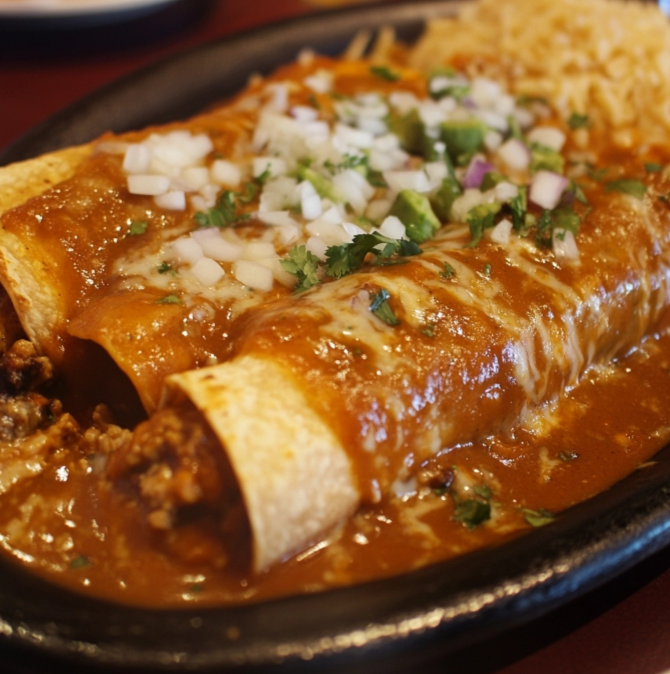What Defines Authentic Mexican Food?
Authentic Mexican food is a vibrant reflection of the country’s rich history, culture, and culinary traditions. Rooted in indigenous practices and enhanced by centuries of regional diversity, it is a cuisine that tells the story of Mexico’s past while embracing modern interpretations. From its ingredients to its cooking methods, Mexican food is distinct and deeply intertwined with the identity of its people. But what truly defines its authenticity? Let’s explore the historical roots, essential elements, and the factors that make authentic Mexican food a celebrated global treasure.
The Historical Foundations of Authentic Mexican Food
The story of authentic Mexican food begins with Mexico’s indigenous civilizations, including the Aztecs, Mayans, and Zapotecs. Their diets were centered around maize, beans, chilies, and squash, collectively known as the “Three Sisters.” These ingredients were not only staples but also held spiritual significance, symbolizing life and sustenance. Corn, in particular, was revered as a sacred crop, forming the base for tortillas, tamales, and atole.
When the Spanish arrived in the 16th century, they introduced new ingredients such as pork, dairy, wheat, and sugar. This fusion of Spanish and indigenous flavors gave birth to many of the dishes that define Mexican cuisine today. Dishes like mole poblano and chiles en nogada are prime examples of this cultural blending, where Old World ingredients met New World techniques.
The importance of preserving traditional cooking methods and ingredients is recognized by UNESCO, which has designated Mexican cuisine as an Intangible Cultural Heritage of Humanity. This recognition underscores the value of its culinary practices and their role in maintaining the nation’s cultural identity.
Key Characteristics of Authentic Mexican Food
1. Ingredients That Define Authenticity
Authentic Mexican food begins with its core ingredients, many of which are native to the land:
- Maize: This versatile crop is central to the diet, used to make tortillas, tamales, and pozole.
- Chilies: From smoky chipotle to fiery habanero, chilies provide flavor, heat, and depth to dishes.
- Fresh Herbs and Spices: Cilantro, epazote, and Mexican oregano contribute to the vibrant aroma and taste.
- Beans: Black and pinto beans are common, often served as sides or incorporated into main dishes.
- Tomatoes and Tomatillos: These are essential for salsas and sauces, offering sweet and tangy flavors.
The careful combination of these ingredients creates the layers of flavor that define authentic Mexican cuisine.
2. Traditional Cooking Methods
The authenticity of Mexican food is also reflected in its preparation:
- Nixtamalization: This ancient technique treats maize with lime, enhancing its flavor and nutritional value. It is essential for making tortillas and tamales.
- Stone Grinding: Using a molcajete (a traditional mortar and pestle), herbs and spices are ground to release their full flavor.
- Roasting and Toasting: Ingredients like chilies, tomatoes, and garlic are often roasted on a comal to intensify their taste.
- Slow Cooking: Methods like barbacoa (meat cooked in underground pits) and mole preparation showcase the patience and care involved in traditional cooking.
3. Regional Diversity
Each region in Mexico contributes unique dishes and flavors, reflecting local ingredients and traditions:
- Oaxaca: Known as the “Land of the Seven Moles,” Oaxaca offers a variety of complex sauces, including the famous mole negro.
- Yucatán: The tropical flavors of this region are evident in dishes like cochinita pibil, a citrus-marinated, slow-roasted pork.
- Veracruz: This coastal state emphasizes seafood, with dishes like huachinango a la Veracruzana (red snapper with tomatoes and olives).
To dive deeper into the roots of Mexican culinary practices, explore The Cooking Facts, which details traditional ingredients and techniques.
The Role of Street Food in Authentic Mexican Cuisine
Street food is a vital part of Mexican cuisine, offering quick, flavorful options that embody the simplicity and vibrancy of authentic dishes. Some iconic street foods include:
- Tacos al Pastor: Inspired by Lebanese shawarma, this dish features marinated pork cooked on a vertical spit and served with pineapple, onions, and cilantro.
- Elote: Grilled corn on the cob slathered with mayonnaise, cheese, chili powder, and lime.
- Gorditas: Thick masa cakes stuffed with beans, cheese, or meat, then fried to perfection.
These dishes reflect the accessibility and adaptability of authentic Mexican food, making it an integral part of daily life.
The Influence of Regional Celebrations
Food plays a central role in Mexican festivals and celebrations, showcasing dishes that are deeply tied to tradition:
- Chiles en Nogada: A patriotic dish served during Independence Day, featuring poblano peppers stuffed with meat and fruits, topped with walnut sauce and pomegranate seeds.
- Pan de Muerto: This sweet bread, adorned with bone-shaped decorations, is prepared for Día de los Muertos (Day of the Dead) to honor deceased loved ones.
- Tamales: A staple at family gatherings and religious celebrations, tamales are made from masa dough and filled with savory or sweet ingredients.
These celebratory foods highlight the cultural significance of Mexican cuisine beyond everyday meals.
Modern Interpretations of Authentic Mexican Food
While tradition remains at the heart of authentic Mexican food, modern chefs are finding ways to reinterpret classic dishes. This balance between preserving heritage and embracing innovation is evident in:
- Fusion Cuisine: Dishes like Tex-Mex nachos and burritos are inspired by Mexican flavors but often deviate from traditional recipes.
- Elevated Classics: Chefs are reimagining traditional dishes using contemporary techniques while maintaining their essence.
- Sustainability: Modern Mexican cuisine increasingly emphasizes local and sustainable ingredients to honor the land’s resources.
To explore how Mexican cuisine continues to evolve, check out What Is the Most Popular Mexican Food, which highlights beloved dishes and their adaptations.
Common Misconceptions About Mexican Food
There are several misconceptions about Mexican cuisine that deserve clarification:
- All Mexican Food Is Spicy: While chilies are a cornerstone, not all dishes are fiery. Many focus on flavor rather than heat.
- Mexican Food Is Heavy: Authentic dishes often incorporate fresh vegetables, lean proteins, and whole grains, making them nutritious and balanced.
- Tex-Mex Is Authentic Mexican: While Tex-Mex borrows elements from Mexican cuisine, it is a distinct fusion with its own identity.
Understanding these differences helps preserve the integrity of authentic Mexican food.
FAQs About Authentic Mexican Food
What Defines Authentic Mexican Food?
Authenticity lies in the use of fresh, native ingredients, traditional cooking methods, and cultural significance.
Why Is Corn So Important in Mexican Cuisine?
Corn, or maize, is central to Mexican culture and diet, forming the base for tortillas, tamales, and pozole.
How Does Regionality Influence Authenticity?
Each region’s unique ingredients and traditions contribute to the diversity of authentic Mexican cuisine.
Is All Mexican Food Spicy?
No, many dishes focus on flavor and use chilies sparingly to enhance taste.
Conclusion
Authentic Mexican food is a celebration of history, culture, and flavor. From its indigenous roots and Spanish influences to its regional specialties and modern interpretations, it embodies the heart and soul of Mexico. By honoring traditional ingredients and methods, this cuisine continues to captivate and inspire.
Whether enjoying a simple street taco or preparing a complex mole, authentic Mexican food offers an unforgettable culinary journey. To learn more, visit Yummy States for insights and recipes that celebrate the essence of Mexican cuisine.

